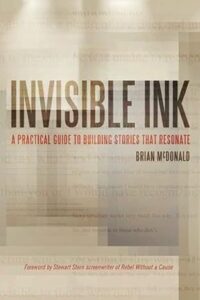FTC Disclosure: Consider each and every link on this site as a commercial relationship or affiliate link, wherein we receive a financial benefit in return for recommending great products we would recommend anyway. Caveat Emptor.
TLDR – Quit fucking around when it comes to writing. Buy this book. This book gives you the fundamentals. Stop avoiding them and annoying your friends and loved ones with half-baked ideas. Do the exercises, and improve the experience for your readers. [Get it on Amazon]
Most writers stumble around in the dark, hammering away at their keyboards, churning out bloated, boring stories that no one cares about. And then they act surprised when their work goes nowhere.
Like any other medium, writing is about getting in the reader’s head and providing a great experience. Most new writers focus on their own experiences, and ignore the reader – this is a common way to fail. You want to make readers feel something so strongly that they can’t put your work down.
That’s where Invisible Ink by Brian McDonald comes in. This book isn’t about finding your muse or stuffing crystals up your ass. McDonald gives you the real secret sauce—the hidden structure beneath every great story. The stuff that professional storytellers use to make their work unavoidable.
McDonald lays out, in plain English, why most stories fail—and how to fix them. He teaches you:
- How to make every scene matter (because most don’t).
- How to create stories that actually mean something.
- How to grab an audience by the throat and never let go.
Most writing books won’t tell you this, but I will: No one wants to read your shit. Your story doesn’t matter if no one cares. This book shows you exactly how to make them care.
If you want to keep wasting time reading feel-good fluff that doesn’t sell, go ahead. But if you want to write stories that punch people in the gut, Invisible Ink is the best money you’ll ever spend.
8 Writing Exercises to Help You Improve Your Work
1. The Armature Exercise
- Purpose: Helps writers identify and clarify the central theme (armature) of their story.
- Exercise: Write a single sentence that encapsulates the moral or core message of the story, like “Pride leads to downfall” or “Love conquers fear.” Ensure every scene, character arc, and conflict reinforces this central theme.
2. Fairy Tale Framework
- Purpose: Simplifies complex story structures by applying the clear, universal structure of fairy tales.
- Exercise: Rewrite a story idea in the format of a fairy tale:
- “Once upon a time…” (setup)
- “And every day…” (status quo)
- “Until one day…” (inciting incident)
- “And because of that…” (cause and effect progression)
- “Until finally…” (climax and resolution)
- This helps ensure the story follows a logical, compelling progression.
3. The Scene-Purpose Test
- Purpose: Ensures every scene contributes meaningfully to the story.
- Exercise: For each scene, ask:
- How does this scene support the armature?
- What change occurs in the character or plot?
- Can the story function without this scene? If yes, cut it.
4. The Mentor Test
- Purpose: Strengthens mentor figures and their impact on the protagonist.
- Exercise: Identify the mentor in the story and define:
- The wisdom they impart.
- How the protagonist initially resists this wisdom.
- How the protagonist ultimately adopts it.
- Ensure that the mentor’s guidance directly supports the story’s armature.
5. The Death Exercise
- Purpose: Creates high emotional stakes by exploring what the protagonist must metaphorically “kill” in themselves to succeed.
- Exercise: Identify what aspect of the protagonist must die—whether it’s pride, fear, selfishness, or something else—to achieve their goal. Show this transformation clearly.
6. The Set-Up and Payoff Exercise
- Purpose: Strengthens story cohesion by ensuring early elements pay off later.
- Exercise: List every setup in the story (introductions, objects, ideas, motifs) and match them with payoffs. If something is set up but not paid off, or vice versa, revise.
7. The “What is This About?” Drill
- Purpose: Forces clarity about the story’s deeper meaning.
- Exercise: Ask, “What is this story really about?” beyond plot details. Keep refining the answer until it is a clear, simple theme.
8. The Empathy Exercise
- Purpose: Ensures emotional connection with characters.
- Exercise: For each major character, write a scene where they express vulnerability or experience a relatable human emotion.
These exercises help writers sharpen their storytelling by ensuring clarity, emotional depth, and structural integrity, reinforcing McDonald’s concept of “invisible ink”—the unseen forces that make stories work.





0 Comments